by Alex Shtaerman
With gun violence in the spotlight once again in the aftermath of the terrible tragedy at Virginia Tech and corporate rap music (unsurprisingly termed “Hip-Hop” by the mainstream media – as if there were no distinction) on the hot seat over lyrical content in a completely unrelated turn of events, perhaps we can at least be fortunate in one regard (fortunate, of course, being a relative term in this case). Somehow – arguably due to common decency and respect for the victims’ families (although decency and respect in the media has never been a priority before) – Fox News, CNN and the rest of ‘em, have failed to connect the idiotic comments made on 60 Minutes by consistently clownish “pseudo-gangsta” rapper Camron in regard to his “no-snitching” policy and the hypothetical implications such an outlook would have on an incident similar to the unspeakable atrocity we witnessed less than two weeks ago at Virginia Tech. Anderson Cooper should have asked Cam what he would do if he was on the Virginia Tech campus and witnessed Cho Seung-Hui murdering his fellow students one by one; would he reach for his celly and page Po-Po?
While glorifying idiots on television is certainly not a new phenomenon, neither is gun violence. And while many in the Hip-Hop community have long worked to mentor at-risk youth and provide guidance for adolescents growing up in less than perfect conditions, it appears that when it comes to the media, such efforts often fall on deaf ears. KRS One, for example, has lectured at literally hundreds of universities including institutions such as Harvard, Yale, Princeton and Oxford; yet somehow, Camron Giles was the one talking to CNN’s Anderson Cooper. Hell, watching Cam spew nonsense is far more entertaining to the average American than listening to Chuck D or KRS One stress the importance of education and knowledge for young people seeking to better their lives. Thankfully, there are still those out there who understand the role that Hip-Hop has played historically in uplifting people of all colors, from all different backgrounds and on every single continent inhabited by humans on the planet Earth (Antarctica being the exception – for those of you geography impaired). In fact, the authentic values of Hip-Hop culture can prove invaluable when it comes to communicating a positive message to our sons and daughters. As head of the new project “Prevent Gun and Youth Violence in North America”, Timea Nagy agrees. Enlisting the help of legendary MC, Darryl “DMC” McDaniels and youth activist Liefel Jackson among others, Timea hopes to use Hip-Hop as a medium in conveying a very important message. Oddly enough, one could argue the message has been there all along. Shhhh, don’t tell CNN. Remember, no snitching!
Read our interview with former Crip turned youth activist Liefel Jackson.
RIOTSOND.COM: You are currently working on a project called “Prevent Gun and Youth Violence in North America”. Can you explain to the fans or anyone who may be reading this, what the project is about and what are some of the things you are trying to accomplish?
TIMEA NAGY: This project is to prevent or put an end to [youth related] gun violence in North America. It’s a three step project. The first step is creating a public announcement using Hip-Hop music as a medium because Hip-Hop music is the number one music that kids are listening to today. I believe that kids listen to Hip-Hop before they listen to their parents or teachers. So I decided that we are going to create a music video with meaningful images and a very strong message about changing your life for the better, no matter where you live, no matter how you grew up, no matter how much you’ve been put down in your life because of your color or background or anything else.
After we create this public announcement music video we are going to move on to the next stage where we will be creating a website, which is actually one of the most important parts of the project. The website will be ChangeMyLife.com and it will be an online community similar to MySpace but it will also serve as a database for all the non-profit organizations in North America. If, for example, you’re a kid living in the Bronx and you’re in deep trouble and you don’t really know where to go or turn, you’ll be able to go on this website or call our 800 number and they will direct you. If you need shelter, if you’re suicidal, if you just witnessed a homicide, this 800 line and website will tell you exactly where to go and who can help you.
My main issue with the non-profit world in North America is that it’s huge and we have all the help we need but nobody knows about it because the non-profits don’t have money to advertise themselves, so they never make it out to the public. The kids who really need to know about them never get a chance to [find out who they can turn to] because there’s no way for them to find out unless you go through some phone book for two hours. On the website everyone will be able to find each other. The website will also be an online community where kids can actually communicate and talk about similar experiences in their lives anonymously; they wouldn’t have to give out their identity if they don’t want to.
We’re going to make the online community a very safe environment. The only way you will be able to sign up to participate is if you go into one of these non-profit organizations, so we’re going to make it safe from all the online sex predators. You’ll also be able to post your art and we’re going to have constant contests going on; you’ll be able to win all kinds of stuff, like an opportunity to take classes or get a camera – if your dream is to be a photographer and you don’t have the money for a camera – we will be trying to put kids on the right path. So, as I mentioned, the website will be one of the focal points of the project.
After that, once we have the music video and the website completed, we will go on a high school tour in Canada and the States and we’re going to educate the kids as to all of the non-profit organizations that they have available to them in their areas. We’re going to educate the kids that it’s not cool to walk around with a gun and it’s not cool to sell drugs. Just because they see this on the TV and in videos, that doesn’t make it cool. The way we want to make sure we deliver this message and they listen to us is by [using Hip-Hop as a medium].
Last week I met with Darryl “DMC” McDaniels [of Run DMC] and we are thrilled that he agreed to be a part of the project. He’s going to be our main ambassador. Everything is in the process right now but at the very least what we want to do is to get many of the Hip-Hop legends from the ’80’s together for one shot in the music video. So it will be like the legends coming together to clean up the image of Hip-Hop once and for all. The Hip-Hop legends don’t think bitches and hos are cool, they don’t think Paris Hilton is cool, many of them never thought that this is what was going to happen to the Hip-Hop they created in the ’80’s. Hip-Hop is not what this is for and this is the time to clean it up and get the correct message out once and for all.
RIOTSOUND.COM: The actual inspiration for “Prevent Gun and Youth Violence in North America” came from your real life experiences and also your work as a volunteer. Can you talk a little about how some of those things influenced you in pursuing this cause?
TIMEA NAGY: In 2004 my boyfriend committed suicide, we lived together and I witnessed the whole thing, it wasn’t pretty.
RIOTSOUND.COM: Was it a gun related incident?
TIMEA NAGY: No, actually it wasn’t related to gun violence, that’s kind of the weird thing about it. It wasn’t about gun violence, he didn’t commit suicide with a gun, he did it another way. But what I did realize is after he passed away I learned about his life and about his childhood and the way he grew up, the way he was during his poor [and difficult] childhood. I’m pretty sure that’s what led him to commit suicide. During my grieving time I had to go to a distress center and they had a suicide survivor program as well. I went through that program and started to learn about kids who grew up in poverty or grew up with racism and I never knew about those things until I had the chance to actually see it for myself.
After I was somewhat healed, as much as you can be healed from something like this, I started volunteering on a crisis line for the distress center. Here in Toronto in 2005 we had the worst gun violence year on record, we had 52 deaths [due to gun violence] so it was a real eye opener for us. During that time I was on the crisis line and one night we got a call about 2:30 in the morning from a little girl – well, she was about fourteen years old – but these are anonymous calls so we never actually got to know who the person was. So she called and she had just witnessed a homicide, her friend just got shot in the face. She was terrified, she said she couldn’t go to the police and she couldn’t go home, so there was nowhere, nowhere she could go at that time.
The girl is in trauma and I need to calm her down. An hour and half later she’s somewhat calm so I said – hold on, I’m going to get my blue book. The blue book is supposed to have all of the organizations in Toronto [listed] that I can get help from, all the non-profits. So I get the book and I call some of these organizations and the answers were like “well, that’s not our area” or “we don’t have a shelter”. So I said – well, do you know who does? And their response was “well, no, not really”. I realized after making four phone calls that none of these people know what each of the other organizations do. We have 180 so called “youth at-risk” organizations in Toronto and none of them are available when there’s a real problem. So what’s going on here?
At that point I got very mad. Eventually the girl agreed to get picked up by an ambulance and she went to a hospital for the night just to stay there and I’m not even sure what happened to her afterwards. So we have 180 organizations in Toronto and we can’t [get anything done]. After this I started studying all of the non-profits. I would call them up and pretend to be a parent or pretend to be a teenager and it turns out that none of them can refer me to anywhere. None of the organizations [have the capability] to refer you to anyone else! You’ll stay somewhere overnight and they’ll kick you out in the morning, they’ll give you breakfast and they’ll say good bye. We have all these organizations and they need to be connected and this project is based on connecting the dots. All of the organizations that will be listed on the website will now know about each other because they will also be able [to use the website as a resource]. The point is to get every single organization to start to learn about each other and they’ll be able to refer people to other places if that’s what they need to do.
RIOTSOUND.COM: A lot of times the media tends to focus on a handful of mainstream rappers glorifying gun violence but somehow they tend to overlook films and videogames that do the exact same thing. What’s worse in your view, glorifying gun violence in music or portraying it on film and in video games? Or are they all equally as bad?
TIMEA NAGY: Absolutely, listen to me, I came from Hungary, I grew up there in a communist country. We only had two TV channels. I didn’t drink a sip of alcohol until I came to Canada and I was 28 years old. I wasn’t under any [negative] influences. I didn’t even know what weed looked like until I was 25. I’ll tell you what North America looks like to me right now. In North America our kids are in a worse situation because they don’t know any better. They open their eyes and they see Paris Hilton, they see McDonald’s, they see guns, they see 50 Cent and bitches and hos. That’s what they see. And we as adults, like the 30, 35 and above, we’re like – oh my god!? What’s happening to our generation? Well, what do you think is happening to our generation? Everything we put out for them they take, this is absolutely our fault. It’s our society, it’s our government and it’s our police. Everything we have done is going wrong with our kids. It’s absolutely our fault so this is our time to change it.
When as a teenager all you read about is that you have to be thin or to grab a gun because it’s cool – all of the stars are doing jail time – this is all our fault and we have to stop it. And it’s not just Hip-Hop. Hip-Hop is just an excuse white people use so they can go to sleep at night thinking that this is not their racist fault. When you have a report on CNN saying that Hip-Hop is a poison or whatever, that make me jump because again, where are the [violent] video games? Video games weren’t created by Hip-Hop, were they? Paris Hilton, she’s white, what does she have to do with Hip-Hop? Yet we still have African American girls trying to look thin. So again, I’m asking, who’s fault is this really?
RIOTSOUND.COM: As you mentioned, Darryl “DMC” McDaniels is going to be involved with the project as an ambassador and you are also hoping to get other Hip-Hop legends involved as things move forward. What will DMC’s role be and why do you feel that Hip-Hop is important in conveying the message you seek to deliver to our youth?
TIMEA NAGY: Our hope is to create a song which will be an anthem for peace and hope for the future [of our youth]. DMC is the one who is going to write the song and produce the track. As far as his role as an ambassador we are working to [finalize and define] that aspect so that is something that will be fully determined as we move forward. What do I know for sure today is that he is eager to start. He’s eager to write the song and he’s also going to be a mentor to a Hip-Hop group from Toronto called Urban Renegades. DMC and Urban Renegades will be collaborating for the song. The reason we wanted to work with DMC is because based upon the research I have done I realized that DMC has already been doing this kind of work for three or four years. He’s been doing motivational speeches at schools and traveling all over America and working to reduce gun violence and he’s putting his heart into it but he’s not doing it in the spotlight. Hopefully this project will give him the perfect opportunity to be the leader of this whole movement.
RIOTSOUND.COM: As individuals and as ordinary citizens, what can we all do to combat gun violence in our communities? As far as a regular person being more proactive in their daily lives, what are some things you think everyone should do to ensure the safety of their neighbors, friends and families?
TIMEA NAGY: That’s a very good question. I think the number one thing you can do is stop being racist. Because when you’re racist, you yourself are creating gun violence and I’ll tell you how. When you’re racist and you’ll hire a white kid instead of a black kid simply based [on the color of their skin] and regardless of what kind of resume or qualifications they might have, then what you’re doing is you’re pushing that black kid one step closer towards the streets. When you’re not giving equal opportunities to every race, that’s exactly what you’re doing. Stop being racist, that’s number one. Number two is listen to the youth. They tell you what’s wrong, they tell you every single day in every possible way they can. They write, they create music, they create artwork. Listen to them because they tell you exactly what they need. Once you listen to them you will know what to do.
RIOTSOUND.COM: If anyone reading this wants to get directly involved with “Prevent Gun and Youth Violence in North America”, what should they do?
TIMEA NAGY: They can contact me directly at timea@soundofviolence.ca


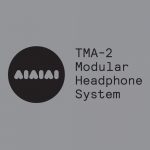



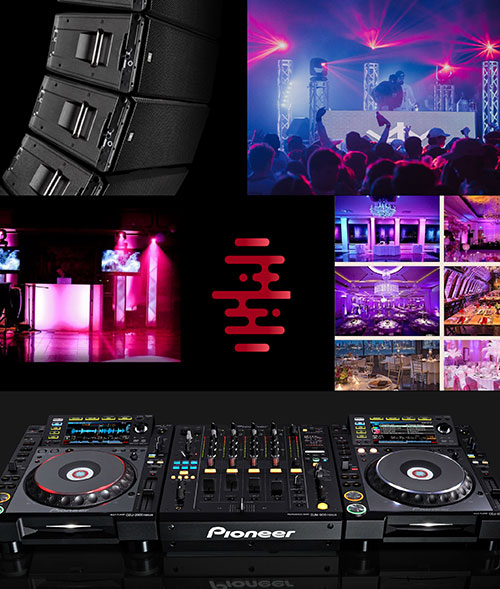


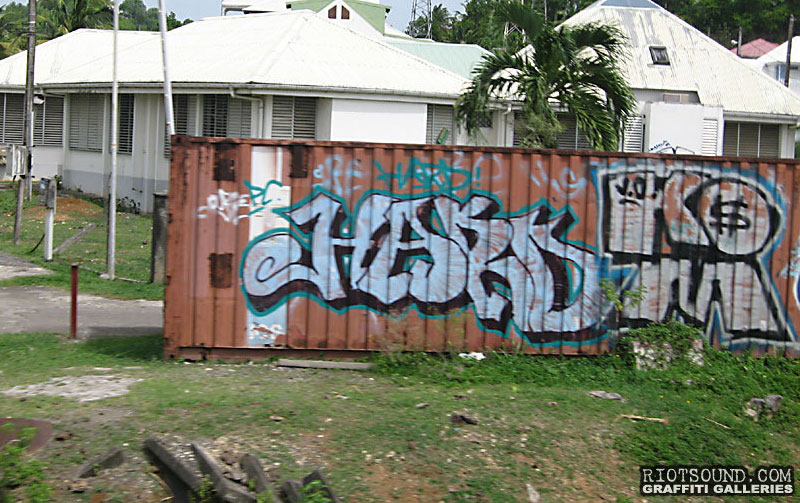
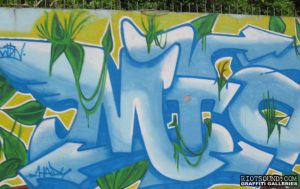
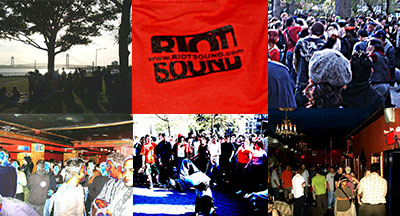
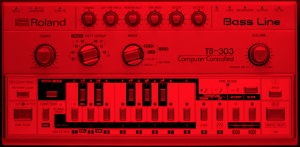









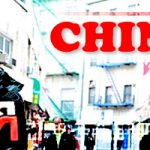

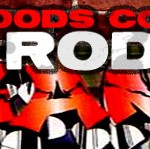

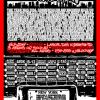
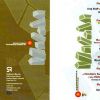
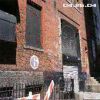

Comments